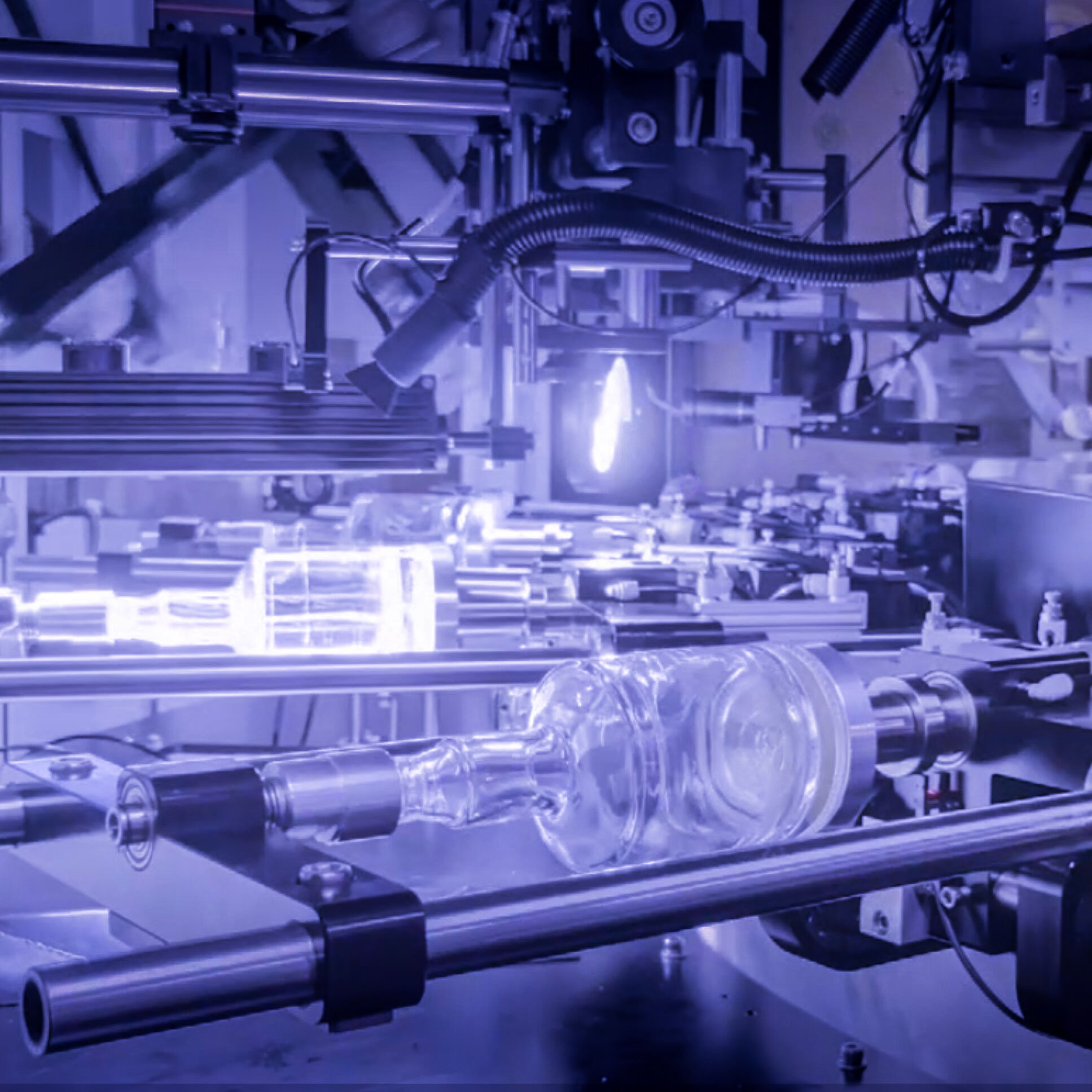The Evolution and Market Demand for High-Speed Rotary Screen Printers
Understanding the demand for high-speed rotary screen printer technology
Since around 2021, the textile business worldwide has been moving towards making custom orders and cutting down on how long it takes to produce goods. Because of this trend, there's been about a 28% jump in need for those fast spinning screen printers according to Textile World from last year. What makes these machines so popular? They can crank out over 1,200 meters of fabric every single hour while keeping almost perfect alignment between prints at something like 99.9% accuracy. Plus they save roughly 40% water compared to older techniques which is pretty impressive when looking at environmental impact. Today's factories want equipment that works equally well with soft silk materials as well as tough industrial textiles without slowing things down or sacrificing the final product quality.
How industrial screen printing technology is evolving to meet market needs
Today's manufacturing systems come equipped with AI for spotting defects and automatically adjusting viscosity levels, which can slash waste by around 15-20% when running nonstop. Some pretty cool tech developments are making waves too. Self cleaning rotary screens cut down on those annoying job changeovers by about two thirds. Then there are these hybrid machines that combine the best of digital accuracy with the tough durability of traditional rotary equipment. And let's not forget about the energy recovery systems that grab back most of that leftover heat energy. Around 9 out of 10 times, factories manage to reuse what would otherwise go to waste. All these improvements mean companies stay ahead of green regulations without sacrificing their bottom line, especially important given how tight competition has gotten in recent years.
Global trends shaping high-volume production printing machinery demand
The Asia Pacific region takes the lion's share at around 62 percent of all new installations these days. This trend has been largely driven by Vietnam where textile exports have grown at an impressive rate of 34% per year according to WTO data from 2023. Turning our attention across the pond, European companies are really pushing forward with closed loop water recycling systems as they prepare for the EU's strict 2025 Zero Liquid Discharge requirements. Looking ahead, the market for rotary screen printing machines seems poised for significant expansion. Industry forecasts suggest it could hit nearly $1.8 billion by 2033. Most notably, about three quarters of recent investment dollars are going toward equipment that can handle multiple ink types including pigments, discharges and water based options during the same production cycle without needing major adjustments.
How High-Speed Rotary Screen Printing Works: Precision, Speed, and Automation
The mechanics of rotary screen printing: Precision and speed combined
High-speed rotary screen printers achieve industrial throughput through rotating cylindrical screens synchronized with substrate movement. Precision-lathed stencil screens deposit ink with micron-level accuracy at speeds exceeding 80 meters per minute. This continuous motion eliminates the start-stop limitations of flatbed systems, enabling uninterrupted production of printed tapes, labels, and narrow fabrics.
Ensuring consistency with high-speed printing solutions in industrial applications
Keeping quality high when running at top speed requires modern equipment that incorporates closed loop tension controls along with automatic monitoring of ink viscosity levels. The servo driven registration system delivers around plus or minus 0.15 mm accuracy over thousands of prints, something absolutely necessary when dealing with complex layered designs on stretchy fabrics. Drying stations built right into the machinery adjust temperatures automatically based on what's being printed, so everything cures evenly no matter if it's polyester straps or those tricky silicone coated warning labels that need special handling.
The role of automation in advancing high-precision screen printing machinery
Automation transforms high-speed rotary printers into self-optimizing units. Machine vision systems detect and correct registration errors in real time, while predictive algorithms adjust squeegee angles based on ink rheology. Automated pallet changers and job recipe databases support shift-long unmanned operation, reducing human-induced variability by 72% compared to manual processes.
Boosting Production Efficiency with High-Volume Rotary Screen Printing
Maximizing Output Through High-Volume Production Printing Capabilities
Modern high-speed rotary screen printers exceed 1,200 prints per hour using simultaneous multicolor printing and automated substrate handling. Precision-engineered cylindrical screens cut setup times by 40% compared to flatbed systems (Ponemon 2023). Preset registration protocols and closed-loop ink control allow quick transitions between batch sizes without sacrificing resolution.
Case Study: Doubling Throughput in Textile Printing Using a High Speed Rotary Screen Printer
A mid-sized textile manufacturer increased output from 550 to 1,140 yards per hour by replacing manual flatbed printers with a rotary system featuring IoT-enabled pressure monitoring. Automation of squeegee positioning and tension calibration reduced defect rates by 28%, while predictive maintenance cut unplanned downtime by 62%.
Measuring ROI From Equipment Investment and Production Capacity Expansion
The same manufacturer achieved a 14-month payback through:
- 33% lower labor costs via automated substrate handling
- 19% reduction in ink waste using volumetric pumping systems
- 82% faster order fulfillment, enabling premium pricing tiers
Industry data shows 78% of manufacturers recoup investments in high-speed rotary printers within 18 months when optimizing shift patterns (Ponemon 2023).
Balancing Speed and Print Quality: Resolving the Core Controversy
The old rotary systems used to have serious ghosting problems once they hit around 900 prints an hour. But things changed with better tension control technology that keeps positioning errors below half a millimeter even when running flat out. According to research published last year, roughly two thirds of folks working with these newer third generation rotary printers saw improvements in both their production numbers and print quality. This basically put an end to that age old argument about whether going faster meant sacrificing quality, thanks largely to advances in how screens are stabilized during operation.
Innovations Driving the Future of High-Speed Printing Technology
Advancements in Ink Delivery and Tension Control for Consistent Rotary Printing
The latest generation of high speed rotary printers incorporates precision gear driven ink delivery systems along with automated tension controls that drastically cut down on print defects. Recent research from FESPA in 2023 indicates these advancements slash ink waste around 18 percent while maintaining nearly flawless color matching across long print runs exceeding ten thousand meters. What really stands out though are the microporous ceramic channels in modern machines. These clever little components automatically adjust for viscosity changes when temperatures fluctuate, making them a game changer for tricky materials such as biodegradable fabrics that can't handle much heat at all during printing processes.
Integrating IoT and AI Into High-Speed Rotary Screen Printer Systems
Leading facilities achieve 22% faster job changeovers using AI-driven predictive maintenance that analyzes 14 operational parameters in real time. IoT-enabled units auto-calibrate squeegee pressure based on substrate thickness detected by laser micrometers, reducing manual adjustments by 73% (PrintTech Efficiency Report 2024). This integration supports 24/7 remote monitoring across global production sites.
Future Trends in the High-Precision Screen Printing Machinery Market
According to Grand View Research's 2024 report, the market worth around $5.2 billion today should expand at roughly 8.7% annually until 2030. This growth comes mainly from increasing interest in water based UV curable inks along with hybrid systems combining rotary and digital printing methods. New nano coating tech is making it possible to print across three dimensional objects in just one pass, something manufacturers have been waiting for. At the same time, many smart factories now install energy recovery systems which capture about 92% of the heat normally lost during drying processes. All these innovations point toward high speed rotary screen printers becoming key players within green manufacturing setups where everything connects seamlessly together.
Aligning Printing Capacity with Business Scalability and Growth Planning
Factories that switch to high speed rotary screen printing equipment can boost their production rates by anywhere from 18 to 34 percent compared to old school methods according to Textile Technology Quarterly from last year. Smart businesses are now employing data analysis tools to match how much they print with what customers actually want to buy, which helps them avoid situations where they either overproduce or fall short on orders. The modular setup of these machines makes expansion possible without huge investments right away. Most companies start with a basic 6 color model and then add extra printing stations when business picks up. This approach cuts initial expenses down around 40% while still letting manufacturers handle busy periods without missing a beat.
Demand Forecasting and Inventory Management in High-Volume Print Environments
Real-time order tracking integrated with rotary printing systems reduces overstock risks by linking ink consumption directly to client lead times. For textile producers serving fast-fashion retailers, algorithmic demand models that factor in seasonal design trends reduce raw material waste by 27% annually.
Strategic Equipment Investment for Long-Term Production Resilience
Forward-looking manufacturers prioritize rotary printers equipped with:
- Automated maintenance protocols that extend screen stencil lifespan by 300%
- IoT-enabled wear monitoring to reduce unplanned downtime by 62%
- Cross-compatible ink reservoirs for rapid substrate switching
These capabilities deliver an average 19-month ROI and future-proof operations against evolving client specifications.
FAQ
What is a high-speed rotary screen printer and why is it in demand?
A high-speed rotary screen printer is a machine used in textile manufacturing that can produce printed fabric at a high speed with precise alignment. Its demand has increased due to its ability to deliver over 1,200 meters of fabric per hour while also offering environmental benefits such as water savings.
How does automation improve rotary screen printing?
Automation enhances rotary screen printing by transforming printers into self-optimizing units, reducing human-induced variability by 72% compared to manual processes. It involves machine vision systems for real-time error correction and predictive algorithms for optimum squeegee angles.
What are the global trends impacting high-speed rotary screen printing demand?
The Asia Pacific region is leading in new installations, driven by countries like Vietnam with significant textile export growth. European companies are focusing on closed-loop water recycling to comply with EU regulations, and globally, there's a trend towards machines that manage multiple ink types efficiently.
Table of Contents
- The Evolution and Market Demand for High-Speed Rotary Screen Printers
- How High-Speed Rotary Screen Printing Works: Precision, Speed, and Automation
-
Boosting Production Efficiency with High-Volume Rotary Screen Printing
- Maximizing Output Through High-Volume Production Printing Capabilities
- Case Study: Doubling Throughput in Textile Printing Using a High Speed Rotary Screen Printer
- Measuring ROI From Equipment Investment and Production Capacity Expansion
- Balancing Speed and Print Quality: Resolving the Core Controversy
- Innovations Driving the Future of High-Speed Printing Technology
- Aligning Printing Capacity with Business Scalability and Growth Planning
- Demand Forecasting and Inventory Management in High-Volume Print Environments
- Strategic Equipment Investment for Long-Term Production Resilience
- FAQ

